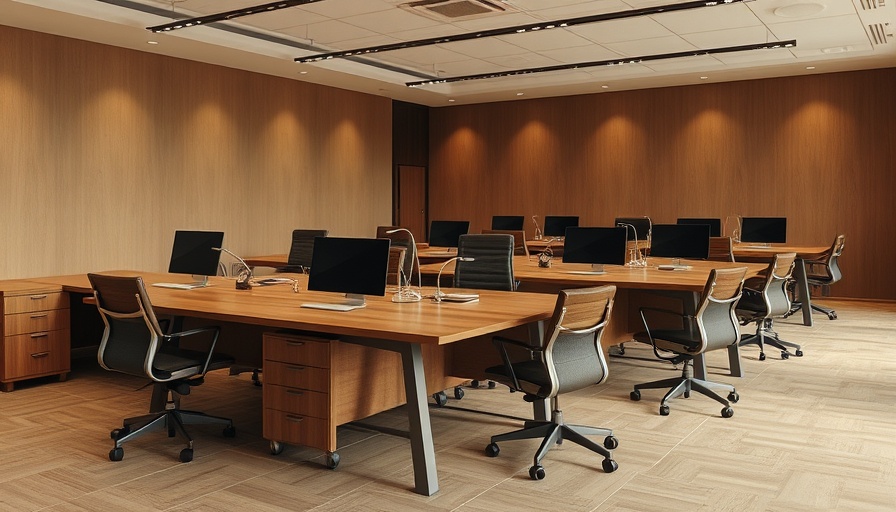
Redefining Workspace Aesthetics with California Vibes
The innovative design firm 22RE has captured the essence of California living in its latest office project for Day Job in Los Angeles. They have approached the concept of workspace not merely as a place to perform tasks but as an environment that fosters creativity, comfort, and a distinctly Californian lifestyle. For digital nomads looking to design their own remote workspaces, understanding these principles can be the key to creating an energizing and productive home office.
Inside 22RE's Distinct Designs: Inspiration from Nature
22RE's design ethos is deeply intertwined with California's natural landscape. The incorporation of organic materials and soothing colors is central to their design for Day Job offices. Features like ample natural light, plant integration, and open-air phrasings echo the relaxed style synonymous with California life. Digital nomads can draw inspiration from these elements, considering how integrating nature into their home workspaces may improve their mental well-being, productivity, and creativity.
Ergonomic Enhancements: Comfort Meets Functionality
As an ergonomics specialist, I emphasize that the design of any workspace should prioritize comfort and health. 22RE's tactile selection of furniture—combining height-adjustable desks with supportive chair options—creates a setting where users can seamlessly alternate between sitting and standing. For digital nomads, this blend of movement and comfort can theoretically enhance focus and decrease the likelihood of work-related injuries.
Pursuing Productivity Through Aesthetic Touches
Another noteworthy aspect of the Day Job office design lies in its attention to aesthetics. By creating visually stimulating environments with colors that motivate and patterns that intrigue, 22RE encourages a workspace that not only looks appealing but also elevates mood and motivation. Digital nomads can learn from this by adding art pieces, inspirational quotes, or vibrant decor to their own areas, contributing to a positive work atmosphere that fuels productivity.
Creating a Home Office that Works as Hard as You Do
Digital nomads often struggle with the separation of work and personal life in shared spaces. One practical insight from 22RE’s designs is the concept of creating designated zones within larger areas. This could mean incorporating a desk nook, a reading corner, or even a small meeting spot. By establishing defined areas, it becomes easier to switch mindsets between relaxation and focus, addressing a common challenge for those working remotely.
Style Meets Sustainability: Making Environmentally Friendly Choices
The growing trend among designers, including 22RE, is to utilize sustainable materials and environmentally friendly practices. This resonates with the modern consumer who is increasingly aware of their ecological footprint. For digital nomads, embracing sustainable practices can mean choosing recyclable materials for their office setup or opting for furniture that both looks good and supports sustainable production. This choice not only benefits the planet but can also enrich a person’s work environment.
Tomorrow’s Office: Trends Reshaping Remote Workspaces
As we delve deeper into remote work's future, understanding design trends can give digital nomads a competitive edge. Flexible layouts, invigorating aesthetics, and ergonomic solutions are paving the way for more adaptive, health-conscious work environments. Whether you’re working at a dining room table or a dedicated office, being aware of your surroundings can ensure you remain engaged and productive throughout the work day.
In summary, the distinctively Californian office designs by 22RE offer more than just visual appeal; they set a benchmark for what a comfortable, efficient workspace should embody. By applying these principles, digital nomads can transform their home offices into energizing and creative environments that prioritize wellbeing. Consider experimenting with these design elements to create an inspiring workspace that reflects your personal style and needs.
 Add Row
Add Row  Add
Add 




Write A Comment